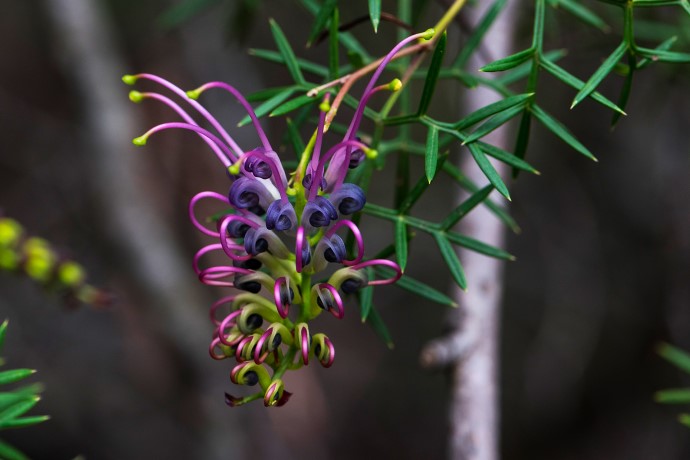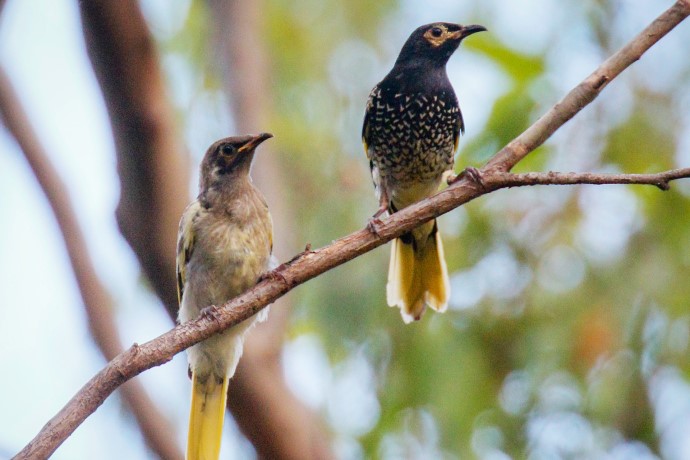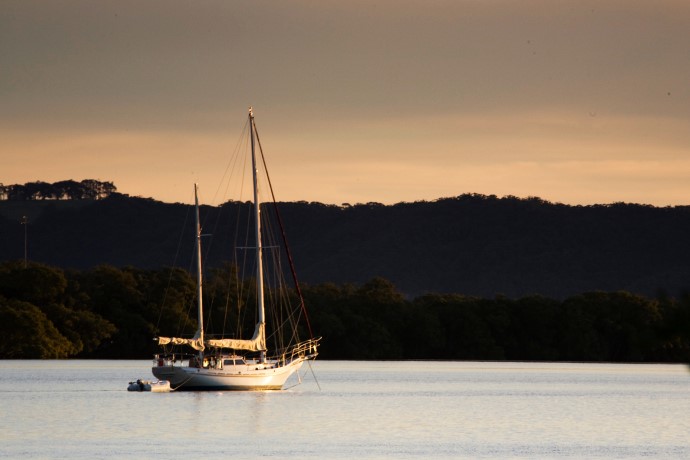With many tourists visiting these attractions every year, revenue is generated for local communities. This is why biodiversity is vital to New South Wales's visitor economy.
We asked some of our partners to share their favourite NSW nature-based destination – and this list is just a few examples of the incredible biodiversity found in New South Wales.
Five nature-based destinations to visit in New South Wales
Gaanha bula–Mount Canobolas
Nigel Hobden, Manager City Presentation, Orange City Council
'Gaanha bula–Mount Canobolas (near Orange in the NSW Central Tablelands) is a diverse environment that is often covered in snow during winter, and then through spring and summer, the mountain has hidden gems such as beautiful terrestrial orchids and an amazing array of fungi.'
Did you know there are over 100 threatened species and ecological communities near the Orange region?
From the endangered swift parrot (Lathamus discolor) and Booroolong frog (Litoria booroolongensis), species big and small call this region home, a feeding spot or a place to rest on their migratory journey.
Northern Rivers Rail Trail
Gary Davey, Managing Director, Madura Tea Estates
'Whether you're a cyclist, a hiker or a culture enthusiast, the Northern Rivers Rail Trail promises an experience rich in history, stunning landscapes, and warm, welcoming communities.'
Did you know there are over 200 threatened species and ecological communities near this region?
Next time you are exploring the trail, consider the threatened species that help keep this natural playground thriving for our enjoyment.
Capertee Valley region
David Donehue, Senior Environment and Sustainability Manager, Transgrid
'I love the vista, hiking and wildlife of the Capertee Valley (in the NSW Central Tablelands). The abundance is rich and varied – the wineries aren't bad either. My all-time favourites are the Mudgee, Rystone and Kandos areas.'
Did you know there are over 130 threatened species and ecological communities in this region?
The region is known to see honeyeaters, insect-eating bats, frogs, owls, butterflies, and many more species that are critical for local biodiversity and need our protection.
Tweed region, North Coast New South Wales
Sandy Wilkins, Product Manager Nature, Sustainability and Wellness, Destination NSW
'The Tweed includes beautiful coastal, hinterland and river landscapes. In one destination, you can swim with turtles, walk in national parks, cruise on the Tweed River and enjoy amazing local produce.'
Did you know there are over 230 threatened species and ecological communities near this region?
The vulnerable red-legged pademelon (Thylogale stigmatica) and the vulnerable herb, pretty eyebright (Euphrasia bella), can be found trying to thrive within these diverse landscapes.
South Coast, New South Wales
Anthea Hammon, Managing Director, Scenic World
'The South Coast is one of my favourite destinations because of the dramatic cliffs, rugged shoreline and white sand beaches. My favourite activities are walking along a quiet beach and exploring the national parks – my kids love seeing the kangaroos and climbing the rocks on the beach.'
Did you know there are more than 800 threatened species and ecological communities that can be found across this region?
Some threatened species in this region include the endangered eastern bristlebird (Dasyornis brachypterus) and the critically endangered Carrington Falls grevillea (Grevillea rivularis).
Conservation efforts funded by tourism can help protect biodiversity
Contact the Saving our Species partnerships team today to start a conversation about conservation.
Contact us
Saving our Species partnerships
Email: sos.partnerships@environment.nsw.gov.au
Stay in touch
- Subscribe to the partnerships newsletter.
- Follow us on Facebook, Instagram, YouTube, LinkedIn or X.
- Search the Public register of Saving our Species conservation strategies.




